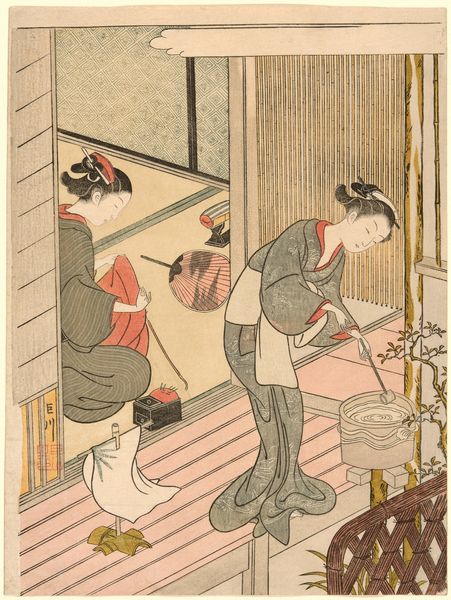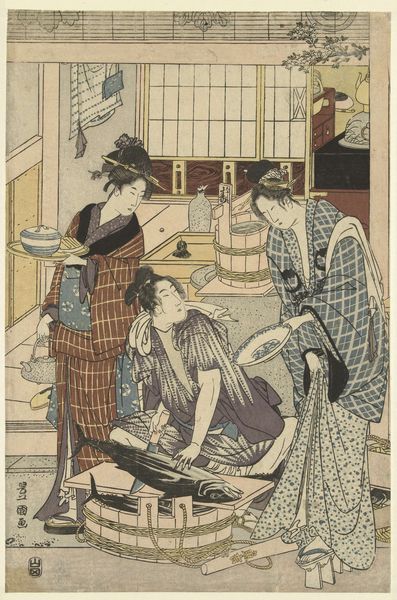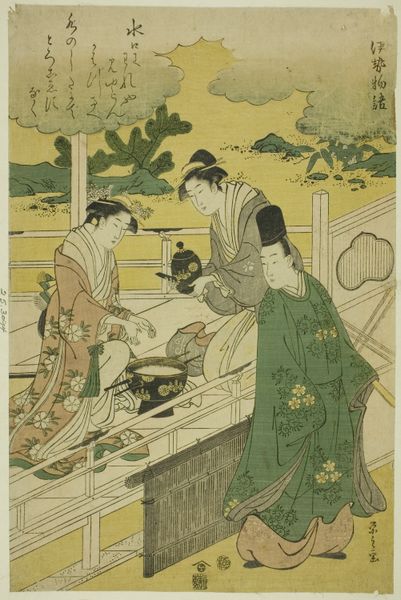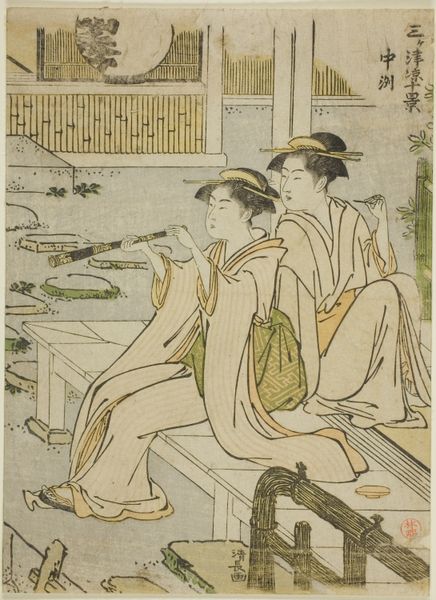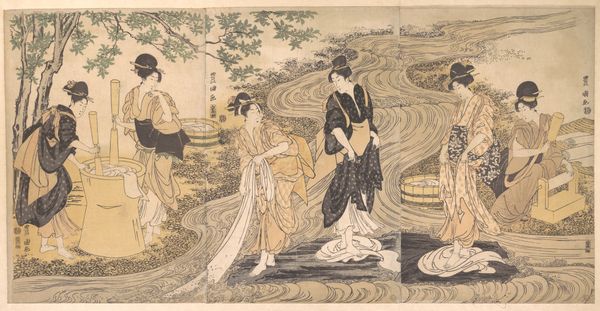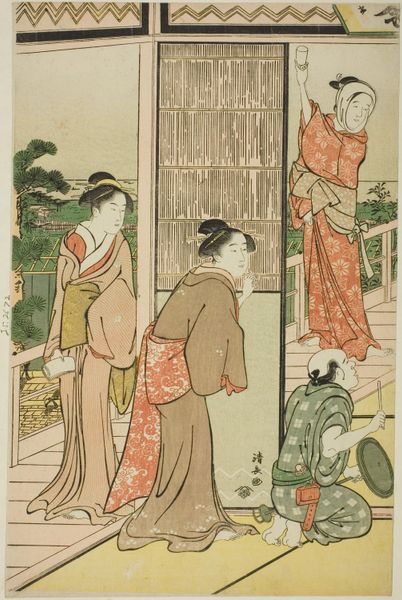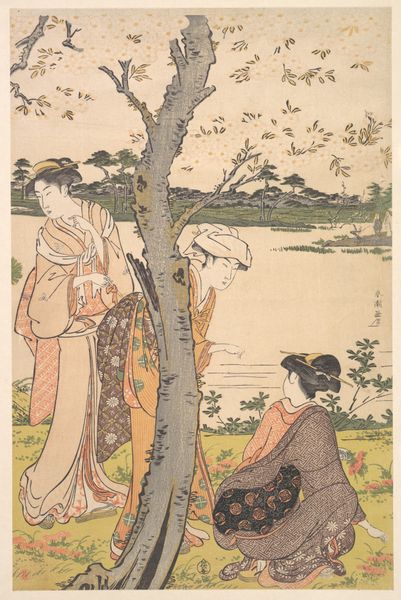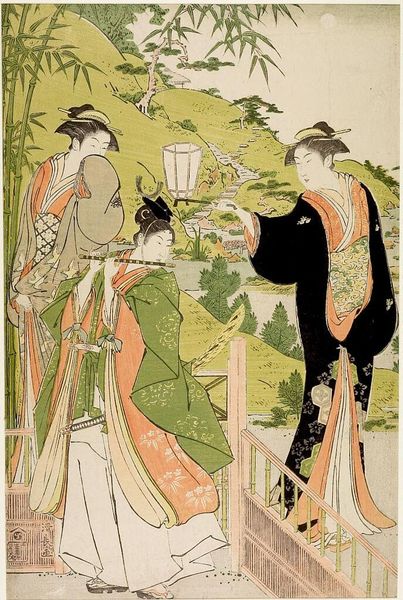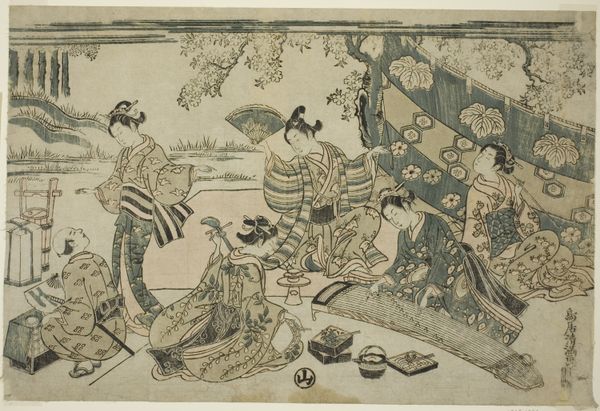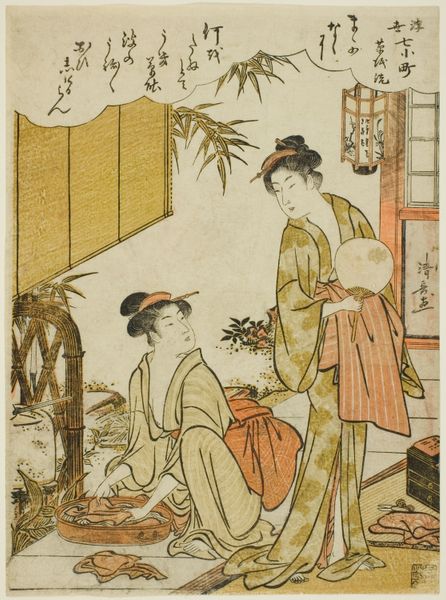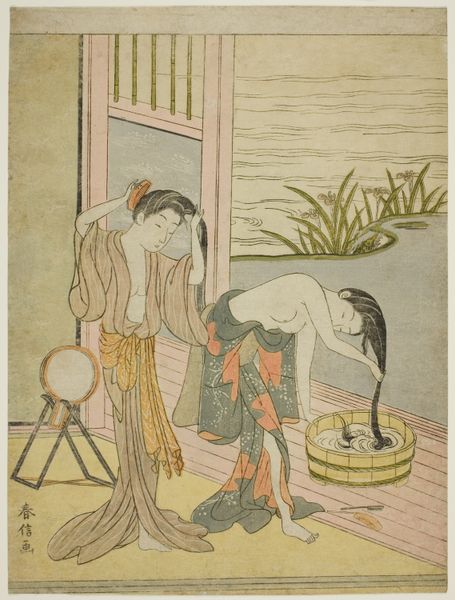
Doing the Laundry by the Well Curb (Idobata no sentaku to araihari) c. 1795
0:00
0:00
# print
#
asian-art
#
landscape
#
ukiyo-e
#
figuration
#
genre-painting
#
watercolor
Dimensions: 37.8 × 24.3 cm (right sheet); 37.9 × 24.2 cm (center sheet); 38.0 × 24.3 cm (left sheet)
Copyright: Public Domain
Curator: I’m immediately struck by the sense of everyday life in this work—a quiet intimacy amidst communal labor. What are your thoughts? Editor: I concur, there’s a captivating candidness in this Ukiyo-e print. We're looking at "Doing the Laundry by the Well Curb (Idobata no sentaku to araihari)" by Utagawa Toyokuni I, created around 1795. The work is currently housed here at the Art Institute of Chicago. I’m fascinated by what this scene suggests about women’s roles and interactions during that period. Curator: Absolutely. Toyokuni, as a printmaker, was very attuned to the public role of images, wasn’t he? How the socio-political forces of the Edo period were influencing artistic output? I think we see that at play here, offering us a carefully constructed glimpse into domestic life. The positioning of these figures within the image plane also suggests the labor class system dynamic in society during that time. Editor: Precisely. Consider the location—the well curb. This wasn’t just a place for chores, but a social space, particularly for women. By framing women performing these acts of labor together, the artist really opens the conversation about gendered labor practices and its impact on Japanese society at the time. Curator: And beyond just documenting the setting and labor, it speaks to how these mundane rituals could have been a rare form of agency. To consider where a public meeting place like this well fits in light of broader gender and labor discourses allows for really complex readings. What I appreciate is that we are challenged to find joy within labor. Editor: I agree. What do you make of the composition, specifically how it uses the vertical format, seemingly dividing different actions across the panels? Curator: It allows Toyokuni to break free of hierarchical portrait traditions, giving prominence to a wider picture. By creating several foci that aren’t necessarily ranked in visual significance, he suggests that there are a series of women within the broader community performing different essential steps that build the image of Japan during that time. Editor: So true. Ultimately, examining Toyokuni's choices and artistic treatment gives insight into not only the everyday activities and rituals but also the gendered performance of class identity in Japanese culture. Curator: An insightful slice of life rendered with elegant, considered lines and form. It speaks volumes. Editor: A really compelling glimpse into history, inviting us to reimagine the lives and voices of those who may often be forgotten.
Comments
No comments
Be the first to comment and join the conversation on the ultimate creative platform.
